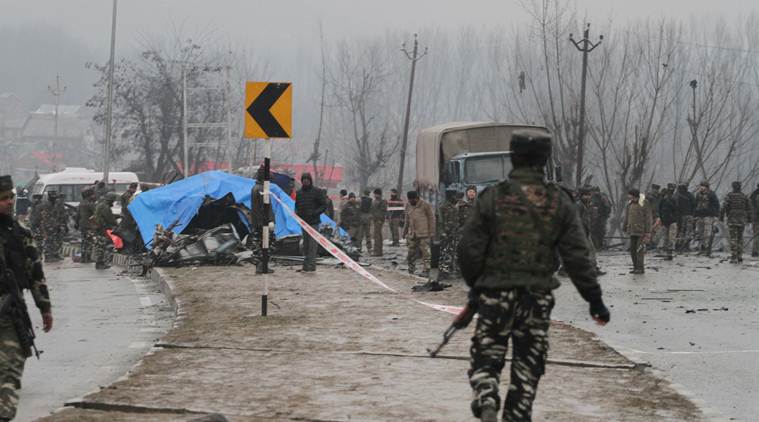
Following the terror attack on Thursday, when 40 CRPF personnel were killed as a suicide bomber rammed his vehicle laden with explosives into their bus in Pulwama district of South Kashmir, the CRPF is holding a series of meetings with the Army, Jammu and Kashmir Police and other security agencies in the state to find ways to effectively counter the new challenge of vehicle-borne IEDs.
“We have discussed the new challenge with the Jammu and Kashmir Police, Army and other agencies. We are taking all possible measures to ensure our movements remain safe and we effectively counter the new challenge of vehicle-borne IEDs,” CRPF DG R R Bhatnagar told The Indian Express.
On Friday, Home Minister Rajnath Singh announced that there would be restrictions on civilian traffic on highways and major roads in the state during the movement of convoys of security forces. This was the practice followed in the late 1990s and early-2000s, but the rule was relaxed in the last decade.
Bhatnagar said a model was being worked out to implement this in the best way possible. “We will sit down (with other stakeholders) and find solutions, so that there is least inconvenience to residents while the security of the convoy is also better,” he said.
On questions being raised about the length of the convoy and the absence of armoured vehicles, Bhatnagar said the impact of the attack made both these irrelevant. As reported by The Indian Express, days of snowfall and a bandh in the Valley had forced the CRPF to bunch together two convoys, creating a 78-vehicle convoy with 2,547 soldiers. So only a part of the convoy got armoured vehicles, while the rest went in buses, making them vulnerable.
“The convoy was slightly longer but that can happen in the winter, as there was no movement for days due to snowfall. It was the fifth vehicle from the front that was hit, so the length of the convoy is irrelevant. Buses are used in all convoys. Also, bunkers (armoured vehicles) are no protection against this kind of a blast. In Chhattisgarh, even mine protected vehicles get blown up. These are just bullet-proof vehicles. They could not have withstood this blast,” said Bhatnagar.
With the CRPF having suffered the worst terror attack in the Valley, Bhatnagar visited units across Kashmir on Saturday. “The morale of the force is very good. I went to several units and spoke to many men. We are a strong and battle-hardened force. We are determined to face this new challenge. Both officers and the men are accepting the professional challenge they have ahead of them,” he said.
The CRPF DG also met personnel who were part of the convoy that came under attack. These men, he said, were now being provided psychological help. “There is some trauma among the men who were in the convoy. They have suffered losses of their dear friends and colleagues, so some of them are in a state of shock and grief. We are providing them psychological help and counselling. I spoke to several of them. Senior officers have been engaged in talking to them and helping them… But the numbers are not too high. The CRPF is a tough force. The men know such losses are part of the professional challenge,” said Bhatnagar.